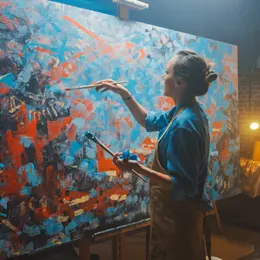Sculpture is an ancient art form that dates back thousands of years. It is a fascinating discipline that involves the creation of three-dimensional artworks from a variety of materials, including stone, metal, wood, and clay.
Sculptors often use their hands to shape the materials, but they may also employ a variety of tools to create their artworks. The finished product can be either representational or abstract in nature.
Sculpture is a significant part of many cultures around the world and has been used to communicate a wide range of messages, from religious beliefs to political statements.
Whether you’re looking at the massive statues of ancient Egypt or the smaller, more delicate works of the Renaissance, sculpture is sure to captivate and inspire.
The history of science and the history of the scientific disciplines
Sculpture is one of the oldest and most fascinating disciplines in the history of science. The history of sculpture can be traced back to the early days of human civilization. The first known sculptures were created by the ancient Sumerians in Mesopotamia. These early sculptures were made of clay and were used to decorate the walls of temples and palaces.
The Egyptians were also great masters of sculpture. They used both stone and wood to create their masterpieces. Egyptian sculptures are characterized by their realism and their use of hieroglyphics.
The Greeks were the first to use marble for their sculptures. They developed a highly refined technique for carving marble. The Greek sculptors created some of the most famous sculptures in history, such as the statue of Zeus at Olympia and the statue of Athena at the Parthenon.
The Romans were also great sculptors. They used marble and bronze to create their masterpieces. Roman sculptures are characterized by their realism and their use of perspective.
The history of sculpture is a long and fascinating one. It is a history that is filled with great artists and great works of art.
What is art history and where is it going?
Art history is the study of the development and history of the visual arts, including painting, sculpture, architecture, and other arts. It covers a wide range of periods, from ancient times to the present day.
The study of art history is a broad field, and there are many different approaches to it. Some art historians focus on the history of a particular artist or art movement, while others focus on the history of art in a particular region or country. Still others focus on the history of art in a particular period, such as the Renaissance or the 20th century.
Art history is often divided into periods, each of which has its own characteristic styles. The most commonly used periodization is the one proposed by the art historian Giorgio Vasari in the 16th century, which divides art history into four periods: the Ancient period, the Medieval period, the Renaissance, and the Modern period.
The study of art history is important for understanding the development of the visual arts and for understanding the history of humanity. It can also be a very fascinating and enjoyable field of study.
Why does art history exist as a distinct discipline separate from the discipline of history?
Art history is a distinct discipline separate from the discipline of history for a number of reasons. First, art history is concerned with the history of art and with the study of art as a historical phenomenon. Second, art history is interested in the ways in which art reflects and shapes the cultures in which it is produced. Third, art history is concerned with the meaning and interpretation of artworks. Finally, art history is concerned with the preservation and conservation of artworks.
Sculpture is an ancient and fascinating discipline that has been practiced by cultures all over the world for centuries. It is a form of art that can be both functional and decorative, and its history is rich and varied. Today, sculpture is still a popular art form, and its practitioners continue to push the boundaries of what is possible.
